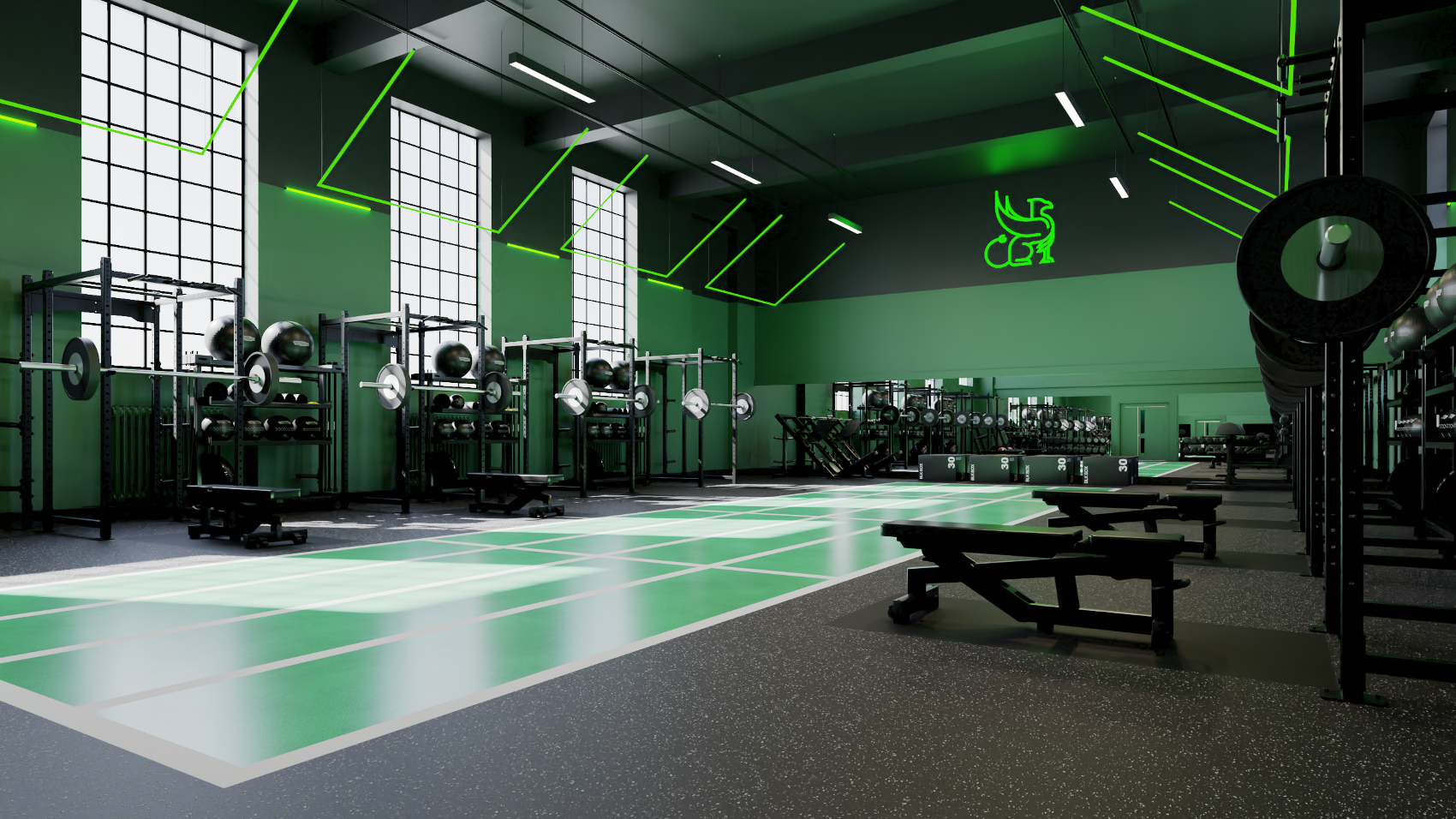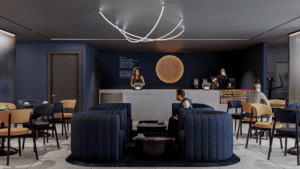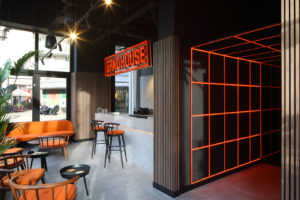
How Gym Design Can Reduce the Effect of Gymtimidation
A growing concern among gym-goers is ‘gymtimidation’—the anxiety or intimidation people feel when entering a gym environment, often preventing them from fully engaging in their fitness journey. This topic has been heavily researched recently, with reports and statistics emerging from key players within the industry. A OnePoll survey conducted on behalf of The Gym Group revealed that one in three Brits (33 per cent) experience gymtimidation. This barrier preventing people from joining the gym is further worsening their mental health whilst also affecting the growth and revenue of clubs.
As specialists in wellness design, we understand that addressing this issue isn’t just about changing fitness culture but also about rethinking the spaces themselves. Through careful design choices, we can create gym environments that are welcoming, inclusive, and supportive of all users, regardless of fitness level or experience.
What Is Gymtimidation?
Gymtimidation is the overwhelming feeling of unease or embarrassment many individuals experience when stepping into a gym. For some, it’s the fear of being judged for not knowing how to use equipment or feeling inadequate in comparison to more experienced gym-goers. Others may feel uncomfortable in crowded, visually overstimulating environments. This sense of intimidation can lead to lower attendance, reduced engagement in physical activity, and even the avoidance of gyms altogether, which ultimately undermines the purpose of wellness spaces.
As wellness designers, it’s essential to address these emotional barriers by creating environments that help reduce stress and encourage participation, especially at a time when mental health is as important as physical health.
How Design can help combat gymtimidation
While no design can completely eliminate gymtimidation, well-thought-out design elements can significantly reduce its effects. Here are key design strategies that can help create a more inclusive and welcoming gym environment:
Strategic zoning and layout:
A well-organised gym layout with clear zoning can significantly reduce anxiety for members. By separating areas for different activities—such as cardio, strength training, and stretching—users can feel more comfortable navigating the space and choosing areas that match their comfort levels. Furthermore, open layouts, with plenty of natural light and visible sightlines, help reduce feelings of claustrophobia or overcrowding. It allows users to see where everything is without feeling boxed in, creating a sense of freedom and choice.
Inclusive and user-friendly equipment:
Providing a range of equipment that is easy to use and understand can alleviate the fear of doing something wrong or looking inexperienced. This includes offering clear instructions and beginner-friendly machines that cater to all fitness levels. Additionally, ensuring that the equipment is accessible to people of all body types and abilities promotes a sense of inclusivity, helping to reduce the intimidation many feel when stepping into a gym.
Clear wayfinding and signage
Navigating a gym can be intimidating, especially for those who are new to fitness environments. Confusion about where to find equipment, classes, or facilities can add to the stress. Incorporating clear wayfinding and well-designed signage makes the space easier to navigate. Clear labels on machines with brief instructions or video tutorials can empower gym-goers to feel more in control, helping to diminish the anxiety associated with using unfamiliar equipment.
Building community spaces
Designing spaces that encourage social interaction, such as lounges or communal areas, can help build a sense of community within the gym. When members feel connected to others, they are more likely to return and feel less isolated in their fitness journey. Group exercise classes, social events, and opportunities for members to interact can further enhance this sense of belonging, reducing the feelings of anxiety that often accompany gymtimidation.
Comfortable changing and resting areas
Changing rooms are often a source of anxiety for gym users, especially if they feel exposed or rushed. Designing locker rooms that offer privacy, such as individual changing cubicles or shower pods, can greatly enhance user comfort. The materials and finishes used here should evoke a sense of calm and relaxation. Similarly, providing comfortable, well-designed rest areas, such as lounges or quiet zones with soft seating and calming décor, offers a retreat from the high-energy gym floor. This is especially important in promoting recovery and mental well-being, allowing users to feel more at ease throughout their visit.
Reception design
The design of the reception and staff areas is often overlooked, but these areas are critical in reducing gymtimidation. Creating approachable, welcoming spaces where members can comfortably interact with staff is crucial for easing anxiety. The reception desk should be inviting, with friendly staff who are easily accessible to answer questions and guide new members. This sets the tone for a positive experience from the moment someone walks in.
Conclusion
Gymtimidation is a genuine barrier to fitness for many people, but through thoughtful, user-centric design, we can create spaces that encourage participation and promote well-being. By focusing on inclusivity, mindful layouts, and user comfort, gym environments can become places that support users at all stages of their fitness journeys—helping to alleviate intimidation and foster a sense of belonging.





